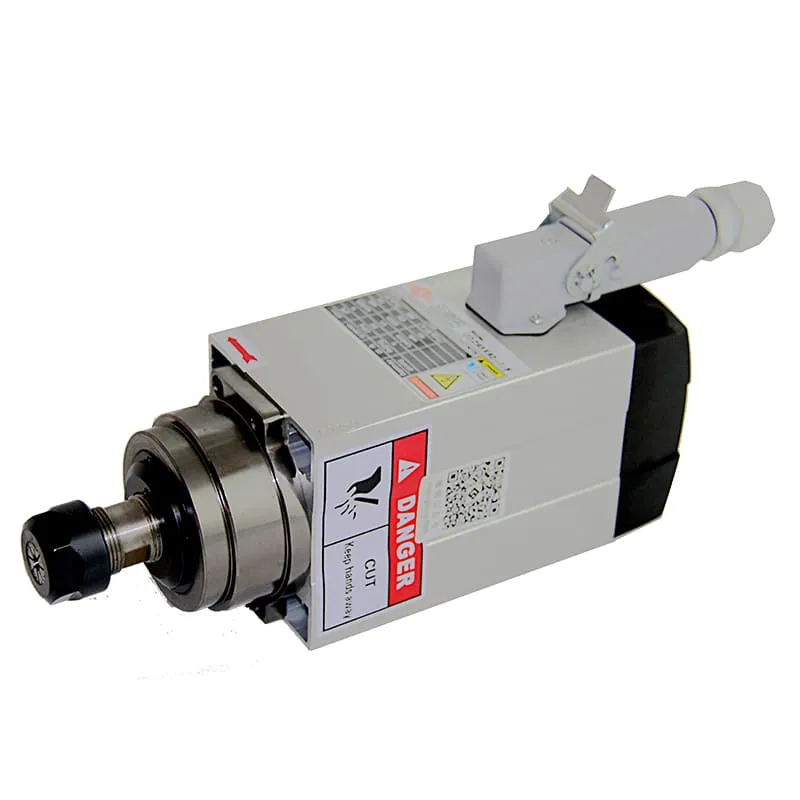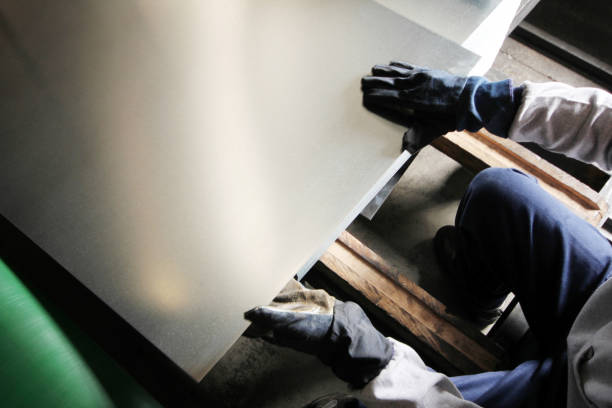What is CNC Routing?
CNC routing is an exciting and innovative process that has transformed the way materials are cut, shaped, and finished. CNC, or Computer Numerical Control, refers to the use of computers to control machines that perform tasks such as cutting, drilling, and milling with extreme precision. CNC routers are the most common type of machinery used in this process, ideal for creating intricate designs in materials such as wood, metal, plastic, and foam. In this guide, we will dive deep into the world of CNC routing, explore its applications, and understand its benefits in modern manufacturing and creative fields.
What is CNC Routing?
CNC routing is the process of cutting or engraving materials using a CNC router. The router is guided by a computer, which is programmed with the necessary information about how to move the tool along different axes to achieve the desired cut or shape. This allows for incredible precision and repeatability when working on both simple and complex designs.
A typical CNC routing setup includes:
- Spindle: The rotating tool that does the cutting.
- Controller: The brain of the CNC machine, responsible for interpreting instructions.
- Table: Where the workpiece is secured.
- Axes (X, Y, Z): Directions that determine the movement of the spindle and the workpiece.
Using a CNC router, you can create everything from simple cuts to intricate 3D designs. It’s a versatile tool that has found use in many fields, including furniture making, signage, and automotive component manufacturing.
For a look at powerful spindles for CNC routers, consider the 1.5KW ER20 Square Air-Cooled Spindle. It is a versatile spindle perfect for CNC routing projects that demand accuracy.

Components of a CNC Router
A CNC router is made up of several key components, each playing an important role in the operation of the machine:
1. The Spindle Motor
The spindle motor is the heart of the CNC router, rotating the cutting tool to carve into the workpiece. Spindles come in various power ratings, depending on the kind of material being machined.
- Power Ratings: From 800W to 6KW, the power of a spindle determines how effectively it can cut through different materials.
- Cooling Systems: Spindles can be air-cooled or water-cooled. Air-cooled spindles are simpler to maintain, while water-cooled spindles often provide longer operational life due to better heat dissipation.
For more information on high-power spindles, check out the 4.5KW ER32 Air-Cooled Spindle, perfect for demanding projects that require heavy cutting power.
2. CNC Controller
The CNC controller is responsible for interpreting the G-code and directing the spindle, router table, and other moving parts. This is essentially the brain of the entire machine.
- Interface: Most CNC controllers have a user-friendly interface, which makes it easy for the operator to enter commands and adjust settings.
- Program Storage: CNC controllers can store commonly used programs, making repeated cuts quick and efficient.
3. Table and Workholding Devices
The table holds the material that needs to be cut. It is equipped with workholding devices, such as clamps or vacuum beds, to secure the workpiece firmly during the routing process. Proper workholding ensures the precision of cuts and reduces the risk of accidents.
4. Axes and Drive Motors
Axes refer to the directions in which the cutting tool can move. CNC routers typically move along three axes:
- X-axis: Horizontal movement.
- Y-axis: Vertical movement.
- Z-axis: Depth movement.
Some advanced CNC routers have more than three axes, allowing for more complex and intricate cuts.
The CNC Routing Process
The CNC routing process involves several steps that transform a digital design into a physical part. Let’s explore this process in more detail.
1. Designing the Part
The process starts with Computer-Aided Design (CAD) software, which allows the user to create a digital blueprint of the part or design. The CAD file contains all the geometric information needed to create the part.
- Popular CAD Software: Fusion 360, AutoCAD, and SolidWorks are widely used for creating CNC routing designs.
- G-code Generation: Once the design is complete, it is exported to CAM (Computer-Aided Manufacturing) software to generate G-code, the language used to communicate with CNC machines.
2. Setting Up the CNC Router
After generating the G-code, it’s time to set up the CNC router. This step involves:
- Installing the Right Tooling: Choosing the correct cutting tool or bit for the specific material being machined.
- Securing the Workpiece: Using clamps or vacuum tables to secure the material to the router’s table.
- Calibrating the Machine: Ensuring the correct zero points are set, so the machine knows where to start cutting.
3. Cutting the Material
Once everything is in place, the CNC router begins cutting the material as per the programmed design. The cutting process can involve different types of operations, such as:
- Profile Cutting: Cutting along the edge of a part.
- Pocketing: Removing material from within a boundary.
- Drilling: Creating holes of various sizes.
The versatility of CNC routing allows users to perform these operations without having to switch tools manually, saving both time and labor.
Types of CNC Routers
CNC routers come in different types, each designed for a particular set of applications and materials. Let’s explore the most common types.
1. Hobbyist CNC Routers
Hobbyist CNC routers are generally smaller and more affordable, designed for at-home projects or small-scale workshops. They are perfect for working on wood, plastics, and sometimes even aluminum.
- Affordable: Prices start as low as $1,000 for entry-level models.
- Portability: Many hobbyist CNC routers are portable, making them suitable for limited spaces.
2. Industrial CNC Routers
Industrial CNC routers are designed for heavy-duty cutting and continuous operation. They are larger, more powerful, and can work with a variety of materials, including metals.
- High Precision: Capable of achieving tight tolerances required in industries such as automotive and aerospace.
- Multi-Axis: Industrial routers often have more than three axes, allowing for highly intricate designs.
3. Desktop CNC Routers
Desktop CNC routers are smaller than hobbyist models but offer more precision. They are typically used in educational environments or for small projects that require high accuracy.
- Compact: Desktop CNC routers are ideal for classrooms or small workshops.
- Versatile: Suitable for prototyping and creating detailed parts in wood, plastic, and soft metals.
Advantages of CNC Routing
CNC routing offers a wide range of benefits, making it a preferred choice in many industries. Here are some of the key advantages:
1. Precision and Accuracy
One of the biggest advantages of using a CNC router is the ability to achieve high precision and accuracy. CNC routers can make intricate cuts and designs that would be extremely difficult by hand.
- Repeatability: Once a program is set, the router can reproduce the same design multiple times without deviation.
- Tight Tolerances: CNC routers can achieve tolerances down to fractions of a millimeter, which is crucial in industries like aerospace and automotive.
2. Efficiency and Speed
CNC routers drastically reduce the time required to create complex parts. Once set up, they can operate autonomously, allowing users to focus on other tasks.
- Automated Operation: The machine can run without constant supervision.
- Reduced Human Error: The computer controls every movement, significantly reducing the risk of human errors.
3. Versatility in Material Usage
CNC routers are incredibly versatile in terms of the materials they can handle. Whether you are working with wood, metal, plastic, or foam, a CNC router can do it all.
- Woodworking: Perfect for cabinet making, furniture, and decorative items.
- Metalworking: Industrial CNC routers can even handle aluminum and other non-ferrous metals.
Applications of CNC Routing
CNC routing is used across various industries due to its precision and versatility. Let’s take a closer look at some of its common applications:
1. Furniture Making
The furniture industry heavily relies on CNC routing to produce intricate designs and ensure consistent quality. CNC routers can cut various types of wood and plywood to create complex furniture components, including decorative panels and joints.
2. Signage
Signmakers use CNC routers to carve signs from materials such as plastic, foam, and wood. The ability to make precise and custom cuts allows for detailed and creative signage.
3. Aerospace and Automotive Parts
In the aerospace and automotive sectors, CNC routers are used to create lightweight parts from aluminum and composite materials. The precision and repeatability of CNC routing make it ideal for manufacturing components with stringent quality requirements.
For cutting high-strength materials, using a powerful spindle such as the 3.5KW ER25 Air-Cooled Spindle ensures effective and accurate machining.

Frequently Asked Questions (FAQs)
1. What materials can a CNC router cut?
A CNC router can cut a variety of materials, including wood, plastic, aluminum, and even foam. The type of material determines the tooling and cutting parameters required.
2. How precise are CNC routers?
CNC routers can achieve accuracies down to fractions of a millimeter. This makes them ideal for projects that require high precision, such as cabinet making or aerospace components.
3. Is CNC routing suitable for beginners?
Yes, many entry-level CNC routers are designed for beginners. With proper training, beginners can learn to use CNC routers effectively for various projects.
4. What is the difference between a CNC router and a CNC mill?
A CNC router is generally used for lighter materials like wood and plastic, whereas a CNC mill is designed to work with harder materials like metals. Routers are typically faster but less rigid compared to mills.
5. Do CNC routers need cooling?
Yes, CNC routers require cooling, especially for the spindle. Spindles can be air-cooled or water-cooled, each having its advantages depending on the application.
Conclusion
CNC routing is an indispensable tool in modern manufacturing, woodworking, and creative projects. Whether you are a hobbyist looking to craft intricate designs or a large manufacturer aiming to streamline production, a CNC router offers versatility, precision, and efficiency. By understanding the components, process, and different types of CNC routers, you can make an informed decision on whether CNC routing is the right solution for your needs. For those interested in acquiring high-quality spindles and other CNC components, visit SpindleMotorShop, where you can find a wide range of products to suit your CNC routing requirements.

